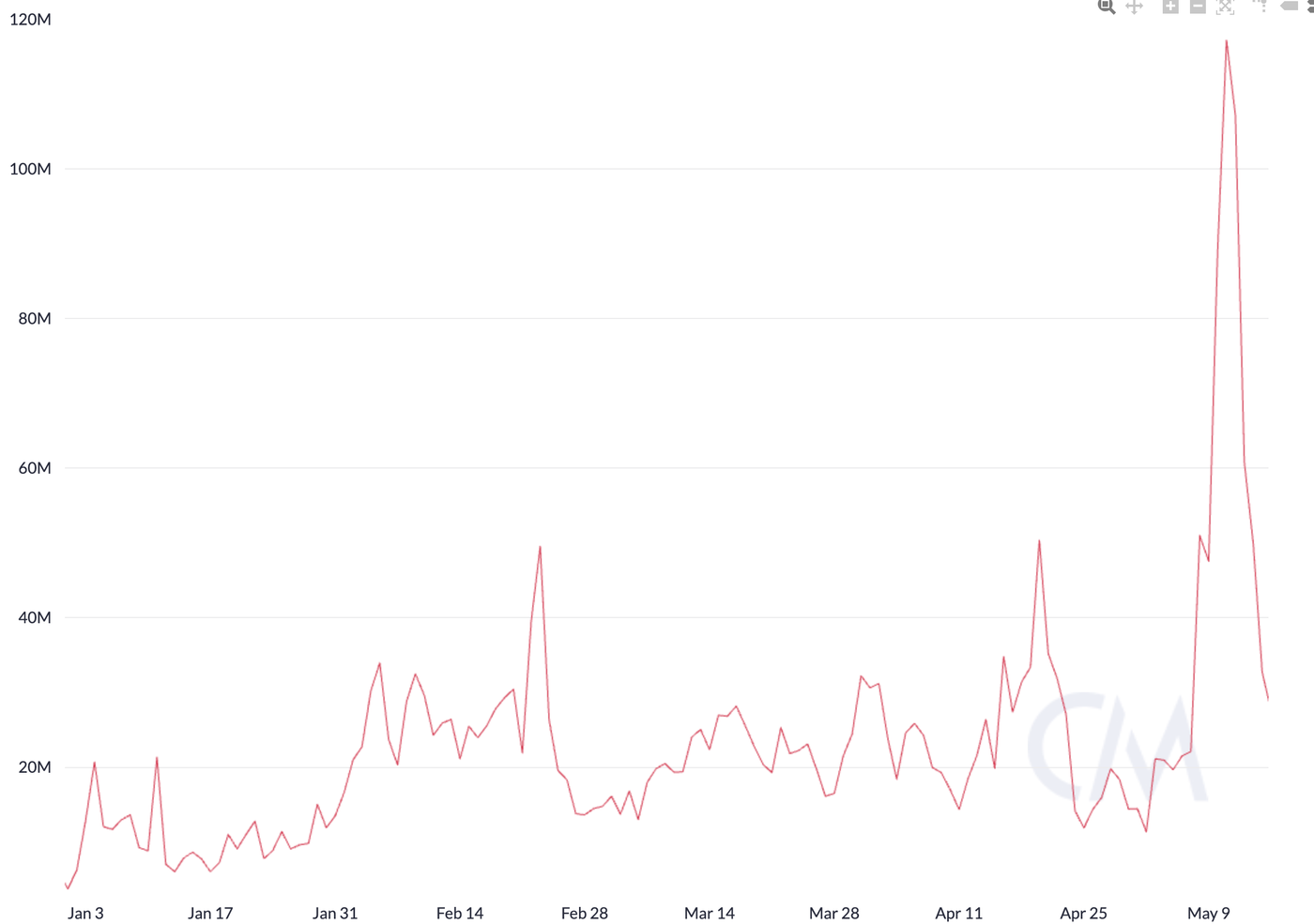

In brief
- Transaction revenue, in dollars, is a product of transaction fees and Ethereum price.
- Revenue is high due to demand for the network and record ETH prices.
- The revenue model is due to shift in coming months, with EIP-1559 and Ethereum 2.0.
Total Ethereum transaction fees have never been higher, thanks to a combination of network use (and the ensuing congestion) and historically high ETH prices.
Transaction fees for May 2021 are on track to break the current monthly record of $722 million at some point today, according to statistics from Coin Metrics, with two full weeks left to go in the month. If the trend continues, the blockchain network will pass its Q1 network revenue totals of $1.7 billion in ETH before the end of May.
The previous high was set just three months ago, in February 2021.

Every time someone uses the Ethereum network to send funds or utilize a smart contract (automated code they interact with to, for example, place a bid on an NFT at auction or swap assets on a decentralized exchange), they must pay a fee, which ultimately goes to miners along with a block subsidy of freshly minted ETH.
Transaction fees are constantly changing depending on network congestion; the more transactions being made, the higher they can go if users are willing to pay a premium. This month’s record fees, denominated in dollars, are thus an indication of total network usage, but also of the price of Ethereum. ETH reached an all-time high one week ago of $4,165, per data from Nomics.

As one might imagine, that’s good and bad news.
If Ethereum were a company, as former Ark Investment analyst James Wang imagined in a Substack newsletter today, those revenue numbers would be very good. Noted Wang of last month’s $716 million haul: “For the month of April, Ethereum generated [an] annualized revenue run rate of $8.6 billion—comparable to [Amazon Web Services] in 2015.” Over the course of the next five years, AWS expanded its revenue 575%, something Ethereum enthusiasts are hoping to do.
Yet that’s contingent on Ethereum being able to scale its operations. Only a finite number of transactions can be processed with each new block in the chain, and the network is approaching the limits of its capacity. A new record for transaction fees would be contingent not on more transactions, but rather on increased price and/or users willingly paying higher gas prices to ensure their transaction gets through.
That is, if things were to stay the same. But forthcoming Ethereum network upgrades should change that.
The July network upgrade, known as “London,” will include Ethereum Improvement Proposal (EIP) 1559, a controversial initiative that will automate gas prices then burn the fee rather than paying it to miners. The upshot is that it will decrease the supply of ETH, thereby increasing demand, while also removing some network congestion.
While the new upgrade should bring transaction fees down, at least somewhat, the real shift won’t come until Ethereum 2.0 is fully implemented. In contrast to the current network, which relies on “mining” via energy-intensive hardware, the new proof-of-stake network will secure the network by having users lock up their tokens in a smart contract. Ethereum 2.0 promises to lower congestion considerably and allow for thousands of transactions per second rather than the current network’s 15 or so, which should bring the transaction costs down to more affordable levels.
In the meantime, Ethereum miners should enjoy their record hauls while they last.

 How Crypto Works?
How Crypto Works?  Why Is Crypto Down? The Truth.
Why Is Crypto Down? The Truth.  Cleveland Clinic Bans Severely Ill Ohio Man From Kidney Transplant Because The Donor Isn’t Vaccinated
Cleveland Clinic Bans Severely Ill Ohio Man From Kidney Transplant Because The Donor Isn’t Vaccinated  LOUISIANA WILL EXPUNGE YOUR CRIMINAL RECORD IF YOU AGREE TO GET VACCINATED
LOUISIANA WILL EXPUNGE YOUR CRIMINAL RECORD IF YOU AGREE TO GET VACCINATED  Kraft Heinz CEO says people must get used to higher food prices
Kraft Heinz CEO says people must get used to higher food prices 


